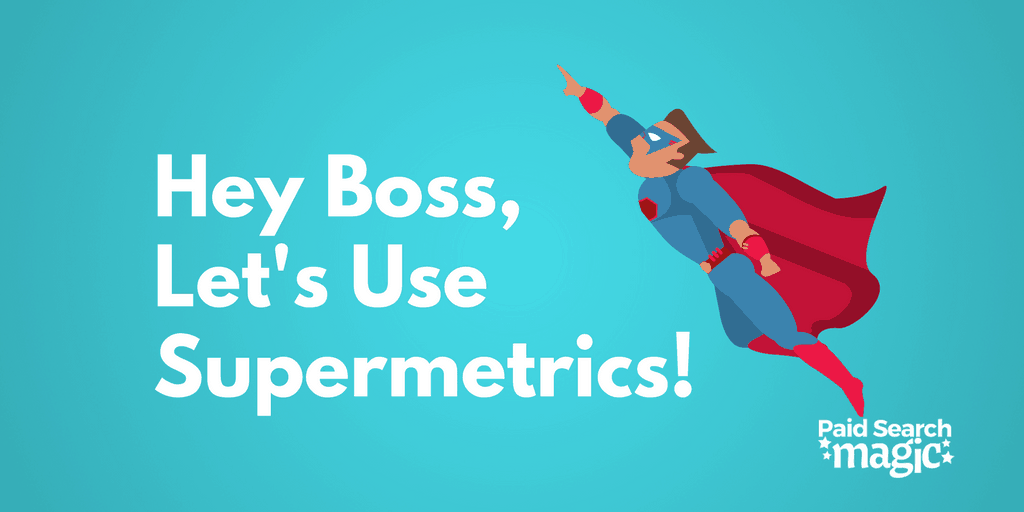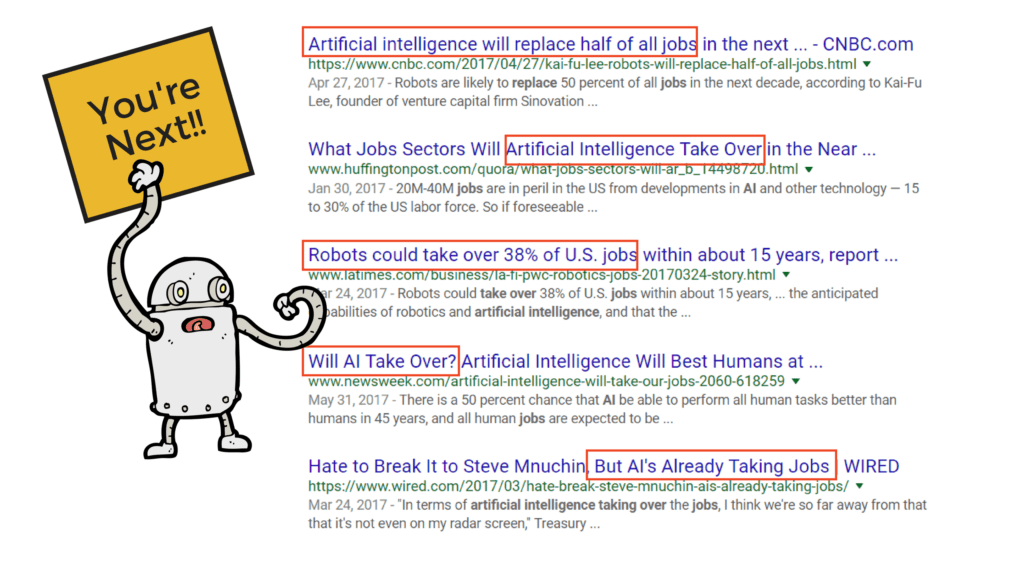Hey Boss, Let’s Use Supermetrics

Convincing Your Boss to Use Supermetrics
At my first agency, my coworkers and I spent a crazy amount of our work week doing routine, time-consuming tasks. At least 80% of my time went to repetitive tasks like:
- Generating Reports
- Managing Budget Pacing Documents
- Analyzing Account Performance
With a background in development, it seemed insane to me that these sorts of things weren’t automated. When I raised the issue, I was surprised at the types of push-back I got. Their objections tended to fall into one of several buckets:
- Fear of technology replacing humans or rendering their skills and/or experience moot
- Poor previous experiences with automation attempts
- Concerns about expense
- Concerns about flexibility
- Not wanting to get locked in to one expensive solution
- Assumptions about what was and wasn’t possible with existing technologies
The first objection is understandable. In a world with ever-advancing automation, artificial intelligence and advanced computing solutions, I think one would have to be in denial at this point to think their field won’t be impacted by advances in AI.

I’m not currently equipped to fight SkyNet, but as for the rest of them, I started reviewing existing solutions. Much to my surprise, most of those objections were born out. There were solutions out there, but all of them were either too inflexible, didn’t meet our requirements, were much too expensive, or required a lengthy term of commitment. Indeed, most solutions had two or more of these kinds of problems.
Then I was introduced to Supermetrics.
Ah, Supermetrics.*
My dear, sweet Supermetrics.
How do I love thee? Let me count thy ways in such a manner as to overcome the objections of my frightful co-workers:
- Commitment: Option for Month to Month (with discounts for longer commitments). Also, because Supermetrics works with Google Sheets, even if your subscription runs out, you still have all your data.
- Affordability: Compared to most solutions, Supermetrics is remarkably inexpensive. At the time of this writing, Supermetrics costs $49 a month for the “pro account”, and $99/month for their “super pro” account. (Most users would find the pro account sufficient.)
- Flexibility: This is perhaps Supermetrics biggest selling point. The power of Supermetrics lies in the combination of Supermetrics and Google Sheets, which allows almost limitless customization.
- Supermetrics has a broad collection of data connectors, and they’re constantly developing new ones according to a list that users get to vote on. For many paid search agencies, just having Google AdWords, Bing Ads and Google Analytics data grabbing is plenty to run most reports. Supermetrics includes all of those and many more in its basic packages.
- Supermetrics leverages the power of Google Sheets, which comes with a variety of charts and special functions and is constantly evolving. If you need more customization, Sheets has custom scripting functionality and there are a variety of plugins and external libraries that can be called on.
- Proof of concept: The best way to dispel assumptions about what is possible, is to create a proof of concept. Fortunately, with the low cost and short commitment time of Supermetrics, you’re not taking much of a chance to sign up for a month and create a report that shows just how powerful the solution can be.
- Fear of being replaced: The combination of Supermetrics & Google Sheets is a powerful one, but it doesn’t do anything without you. Google Sheets was designed to replicate most functionality within Excel, so anyone familiar with Excel will quickly be able to adapt. All Supermetrics is, at its core, is a method of easily grabbing data from a variety of sources, segmenting it, and sticking it into Sheets. Automation vendors love to say that their technology “frees up” workers to spend their time doing what they do best – being “creative.” In this case, that’s actually true. Google Sheets equips any Excel user with new super-powers that can be used to do their job better in a variety of ways.
If you step through these points with your boss and coworkers, you’ll find that most of their objections will start to crumble, and they’ll get that glint in their eye as they begin realizing what they can do with this “Super” solution. Okay, that was awful, but you know what I mean.
For me, I was fortunate to work for an agency with an owner who was forward-thinking and loved the idea of automation. He had been burned before by a group of developers who were happy taking his money, but seemed to have an aversion to finishing things or doing them to specification. However, he was happy to hear me out. He asked me to write up an executive summary, and the rest was history.
You may find yourself in the same situation.
To make this part of the process a little easier, I made an updated executive summary and generalized it so it’s applicable to more situations.
You’re welcome to customize it and use it for your own situation. You can find a Google Docs copy here. Once you’re there, create a copy and make whatever changes are need to make it specific to you and your organization.
- For the large organization, the value is aggregated data with a significant reduction in working hours and errors.
- For smaller companies, the value is aggregated data for only $49/mo (also with fewer working hours and errors).
Easy, right? Grab your template here, and go get started with Supermetrics!
PS – If you need help with implementation, I offer Supermetrics consulting support over at Clarity.fm.
*Note: If you sign up for Supermetrics with this link I get a small cut of the signup fee. Your cost is the same either way.
If you feel the same way, join us here. You'll get our latest content and podcast episodes that will teach, inspire, and motivate you to achieve new levels of success with Paid Search.Here at Paid Search Magic, we get pretty excited about all things related to getting better RESULTS in Paid Search Marketing.

